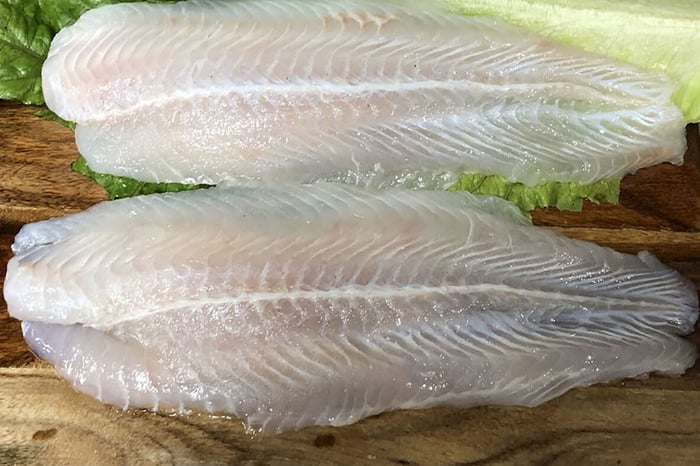Basa is imported from south-east Asia, where it is predominantly farmed along Vietnam’s Mekong River in ponds, tanks and cages close to or in the Mekong. Farms discharge wastewater to the river, which likely cause localised pollution. However, the effect of basa aquaculture on waterways is minor when compared with the degradation of the Mekong River by runoff from agriculture and other human activities.
Basa is an omnivorous species of fish that requires some fish protein in its diet. Some farms use wild caught fish processed into fish-feed pellets and others use a combination of home-made feed made from, for example, rice bran and ground up small fish caught in the Mekong River. As there are numerous small, medium and large-scale basa operators, it is not possible to assess the dependence of the basa-farming producers on wild caught fish resources individually. However, available research indicates basa farming remains dependent on highly unsustainable wild caught fisheries, with a greater volume of fish removed from the ocean than is produced through basa farming.
Major retailers in Australia and internationally tend to require sustainability certification of farms that produce basa, and only sell product from these sources. This market initiative has driven significant improvements in basa production, such as managing the waste produced in fish farming. Vietnam has also introduced a standard to which all farms must operate in order to export product; however, the standard is not considered high enough to allow access to the US and EU markets.
While advances in basa farming are underway, ongoing concerns around the environmental cost of basa production results in a red rating for basa overall. While AMCS maintains concerns around all basa production, the major retailers in Australia have committed to sourcing all of their basa product from certified sources, which is a step in the right direction.
Sustainable Alternatives:
Dusky Flathead - Stocks of dusky flathead in NSW are considered healthy, as commercial catches are stable compared to long-term fishery catch records, indicating that overfishing is not occurring.
Silver Perch (Farmed) - A freshwater species once common in the Murray-Darling River, silver perch is farmed on land in ponds. These ponds are small-scale, and have a low impact on their surrounding habitat. Wastewater is either discharged to natural waterways or used to irrigate crops. Wastewater quality is monitored to prevent pollution and ensure that it does not carry disease that can infect wild populations, as silver perch is threatened in many parts of Australia.
Tailor - The beach haul and tunnel net methods used to catch most tailor in QLD facilitate the release of any unwanted catch with high survival rates, making these fishing methods a relatively low impact and sustainable approach. They are also deployed over sandy or muddy habitats which are resilient to fishing disturbance.
Check out https://goodfish.org.au/ to find out more about sustainable fishing.


